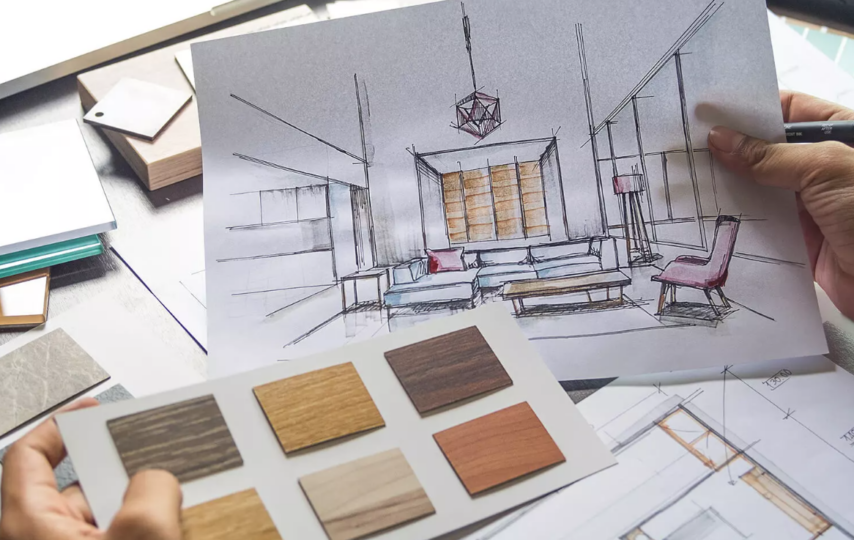Turning interior design into a career is a journey marked by cultivating a passion for creating captivating spaces. This pursuit harmonises education, skills, and determination to craft a tapestry of success. Like a gardener tending to a flourishing garden, aspiring designers nurture an unwavering commitment to design, fostering a passion that fuels their creative voyage. As this journey unfolds, a blend of creativity and technical proficiency is harnessed to transform design concepts into tangible, awe-inspiring realities. The symphony of colours, textures, and spatial arrangements becomes the medium through which designers communicate emotions and stories. This article will examine the multifaceted facets of turning interior design into a career, unravelling the threads of passion, education, experience, and innovation interweaving to shape a fulfilling and impactful profession. To delve further into design and its transformative potential to learn more, you can consider joining Online-Kurse für Innenarchitektur, which comprehensively explores interior design’s nuances, guiding aspiring designers toward endless creative possibilities.
Nurturing the Seed of Passion: Cultivating genuine enthusiasm for interior design sets the foundation for a successful career. This initial spark ignites the journey, propelling individuals to confidently dive headfirst into the design. Like a gardener tending to a young seedling, designers water this passion with continuous learning, exploring design concepts, and observing how various elements interact to shape dynamic and harmonious environments.
Education as the Cornerstone: Education is the cornerstone upon which a career in interior design is built. Enrolling in reputable design schools or pursuing specialised courses equips individuals with robust skills, design principles, and technical knowledge. This educational foundation acts as a compass, guiding aspiring designers through the intricate landscape of aesthetics, functionality, and spatial arrangement. It ensures their design decisions are grounded in a solid understanding of the field.
Cultivating a Creative Skill Set: Interior design demands a diverse and robust creative skill set. From the art of sketching and rendering to mastering the intricacies of spatial visualisation and colour theory, designers must continuously hone these skills through dedicated practice and experimentation. As a painter refines each brushstroke, aspiring designers refine their creative abilities to breathe life into spaces that evoke emotions and encapsulate their unique design vision.
Hands-On Experience: While education provides the theoretical foundation, hands-on experience is the crucible where knowledge transforms into practical expertise. Internships, apprenticeships, or entry-level positions offer invaluable opportunities to apply classroom learning to real-world scenarios. This experiential learning enables designers to gain insights into design dynamics, client interactions, and the practical aspects of translating design concepts into tangible, functional spaces.
Navigating the Industry Landscape: Navigating the interior design industry is akin to traversing uncharted waters, where networking and building connections act as the compass guiding designers toward success. Establishing relationships with mentors, peers, and professionals within the industry creates a network that extends beyond professional collaborations. Engaging in industry events, workshops, and design communities nurtures these relationships, fostering an environment of shared learning and growth.
Building a Diverse Portfolio: A diverse portfolio is a visual testament to an aspiring interior designer’s proficiency and creative prowess. This collection of work showcases a range of projects, styles, and design approaches, highlighting the designer’s ability to transform abstract concepts into tangible, aesthetically pleasing realities. Just as a gallery showcases an artist’s oeuvre, a diverse portfolio showcases a designer’s capability to captivate and inspire through design.
Embracing Entrepreneurial Spirit: Turning interior design into a career often requires embracing an entrepreneurial spirit. Many designers opt for freelancing or embark on entrepreneurship by establishing their design firms. This journey demands a deep understanding of design principles, business acumen, marketing skills, and project management expertise. Designers navigating this path become architects of their destiny, translating their creative vision into thriving ventures.
Continual Learning and Evolution: Interior design is a realm of perpetual evolution, where staying ahead requires embracing a mindset of continual learning. The design landscape is shaped by emerging trends, evolving technologies, and shifting design philosophies. To thrive in this dynamic field, designers must remain adaptable, open to learning about new trends, mastering cutting-edge software, and expanding their design horizons. By immersing themselves in this culture of learning, designers ensure their work remains relevant, innovative, and impactful.
Conclusion:
In the culmination of the journey to turn interior design into a career, designers emerge as storytellers who weave narratives through spaces. This path blends passion, education, skills, and a relentless pursuit of excellence to create environments that resonate with occupants’ aspirations. As designers navigate the intricate dance of aesthetics and functionality, they become architects of experiences, crafting realms where form and function unite perfectly. The echoes of their creative expression reverberate through the lives of those who inhabit the spaces they design, reflecting the profound impact of design on the human experience. To embark on this transformative journey, gain deeper insights into interior design, and learn more, you can consider joining Online-Kurse für Innenarchitektur. Through this exploration, designers shape environments and mould their destinies, leaving an indelible mark on the canvas of design’s ever-evolving landscape.







